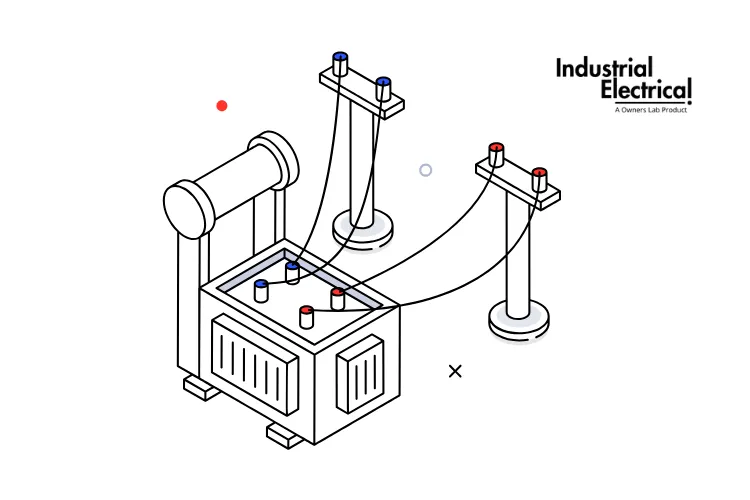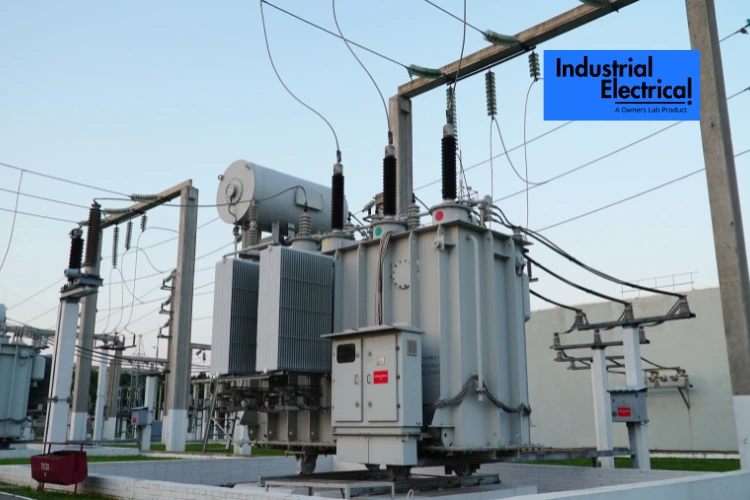
In this article, power transformer faults are categorized into two internal and external faults.
When a fault occurs in a power transformer, specific diagnostic tests are performed to identify the fault, assess the extent of damage, and determine whether repairs or replacements are necessary. These tests fall into categories aimed at evaluating electrical, mechanical, and insulation integrity. Below are the most common tests conducted after a fault:
IN THIS ARTICLE
Introduction
Types of Transformer Tests
Purpose
Procedure
Conclusion
Overview
TOTAL TIME: 5 mins
SKILL LEVEL: : Beginner
What Tools You'll Need for Transformer Tests:
Equipment / Tools
- Multimeter
- Clamp meter
- LV Megger
- HV megger
Introduction

Types of Transformer Tests
01
Electrical Tests
a)
Insulation Resistance (IR) Test
- Purpose: Checks the insulation condition between windings and the core.
- Procedure: A megger applies a DC voltage, and the resistance is measured.
- Indications of Fault: Low insulation resistance indicates moisture, contamination, or insulation breakdown.
b)
Winding Resistance Test
- Purpose: Detects open circuits, shorted turns, or issues in winding connections.
- Procedure: DC current is injected through the windings, and resistance is measured.
- Indications of Fault: High or unequal resistance between phases suggests damage to windings.
c)
Voltage Ratio Test
- Purpose: Verifies that the transformer maintains its correct turns ratio after the fault.
- Procedure: Voltage is applied to the primary, and the output is measured on the secondary.
- Indications of Fault: Deviations from the specified ratio indicate winding deformation or shorted turns.
d)
Magnetic Balance Test
The Magnetic Balance Test is a widely used for three-phase transformer tests. It is primarily performed to detect faults in the core, verify imbalances in the magnetic circuit, and identify early-stage inter-turn faults. This proactive test is particularly crucial during manufacturing or maintenance to ensure transformer reliability.
Why Magnetic Balance Testing is Important
- Core Fault Detection: Identifies issues like shorted laminations or localized saturation in the core.
- Magnetic Circuit Imbalance: Detects discrepancies in flux distribution caused by winding issues or structural defects.
- Inter-Turn Faults: Identifies short circuits within winding turns, which can escalate into major faults.
Test Procedure
- Set the transformer Tap Changer to the nominal position.
- Apply a single-phase AC voltage to one terminal of the high-voltage (HV) winding.
- Measure the voltage across the other two HV terminals.
- Repeat this process for all three phases.
Interpretation of Results
If the applied voltage equals the sum of the two measured voltages across the other terminals, the transformer is magnetically balanced. However, discrepancies indicate core faults, imbalances, or winding short circuits.
Limitations
This test is indicative rather than definitive. Results depend on flux distribution and should be complemented by other tests, such as winding resistance or insulation tests, for accurate fault diagnosis.
In summary, the Magnetic Balance Test is a simple yet effective tool for early fault detection in three-phase transformers, ensuring timely maintenance and preventing failures
d)
Open Circuit and Short Circuit Tests
The Open Circuit (OC) and Short Circuit (SC) tests are fundamental diagnostic procedures for transformers. They are crucial in assessing a transformer’s performance and identifying potential faults. These tests provide essential parameters, including core losses, copper losses, and impedance, which help in understanding transformer health and efficiency.
Purpose of OC and SC Tests
Core Loss Analysis (OC Test):
- Determines losses in the transformer’s core due to eddy currents and hysteresis.
- Helps detect issues such as damaged core laminations or localized heating.
Copper Loss and Impedance Measurement (SC Test):
- Evaluates winding resistance and leakage reactance.
- Identifies problems like inter-turn shorts, poor connections, or deformed windings.
Efficiency Calculation:
- Both tests provide data to estimate the transformer’s efficiency and operational suitability.
Fault Diagnosis:
- Deviations in results from baseline values indicate potential faults, including core saturation, winding defects, or insulation failures.
How OC and SC Tests Are Performed
Open Circuit Test:
- Primary winding is energized at rated voltage, and secondary winding is left open.
- Core losses (no-load losses) are measured using a wattmeter.
- Results highlight core integrity and magnetization behavior.
Short Circuit Test:
- Secondary winding is shorted, and a reduced voltage is applied to the primary winding.
- Copper losses (load losses) are measured using a wattmeter.
- Results reveal winding resistance, leakage reactance, and potential deformation.
Read our articles:
Electrical Engineering Interview:
When it comes to preparing for interviews in the electrical engineering domain, first-hand experiences can be invaluable. In this blog, we explore the interview journeys of two candidates, Rajarshi Nath Banerjee and Shinjini Singh, as they share insights from their interviews with top companies and PSUs like NALCO, POSOCO, and Tata Power.
02
Insulation and Oil Tests
a)
Dielectric Dissipation Factor (Tan Delta) Test
The Dielectric Dissipation Factor (Tan Delta) Test is a diagnostic method used to evaluate the insulation health of a transformer. This test measures the dielectric losses in the insulation system, providing insights into its quality, contamination levels, and aging. It is particularly valuable for detecting moisture ingress, degradation, or contamination in transformer insulation.
Why Conduct a Tan Delta Test?
- Assess Insulation Quality: Determines whether the insulation system (oil and solid insulation) is intact and functioning correctly.
- Early Fault Detection: Identifies deterioration before it leads to a catastrophic failure.
- Moisture and Contamination Analysis: Helps detect moisture ingress, dirt, or other contaminants that reduce insulation efficiency.
- Preventative Maintenance: Enables operators to schedule maintenance before major breakdowns occur.
b)
Transformer Oil Analysis
- Dissolved Gas Analysis (DGA)
- Purpose: Detects gases generated due to overheating or arcing.
- Indications of Fault: High levels of hydrogen (H₂), acetylene (C₂H₂), or ethylene (C₂H₄) indicate specific fault types like arcing, overheating, or partial discharge.
- The following major faults can be diagnosed by DGA: 1. Sparking or high current breakdown. 2. Sparking with low energy or partial discharge. 3. Local temperature rise or hot spot. 4. Overall temperature rise due to insufficient cool ing or continuous overloading
- Oil Dielectric Strength Test
- Purpose: Measures the breakdown voltage of oil.
- Indications of Fault: Low breakdown voltage suggests contamination or moisture.
03
Conclusion
Testing transformers is a crucial step in maintaining their operational reliability and safety. By employing proper procedures, calibrated instruments, and adhering to international standards, manufacturers and operators can ensure optimal transformer performance throughout its lifecycle.
Always consult the manufacturer’s manual and relevant standards for precise testing methods tailored to specific transformer ratings.
